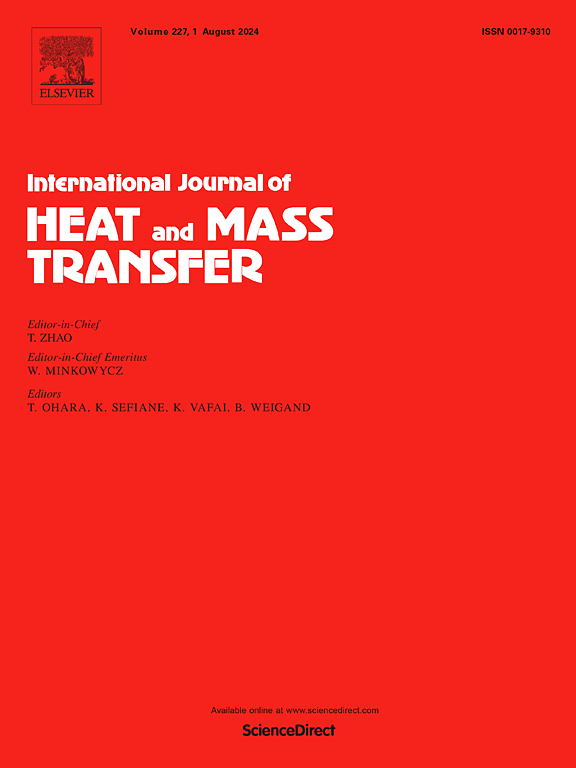水侵蚀对汽轮机级联非平衡凝结的影响
IF 5
2区 工程技术
Q1 ENGINEERING, MECHANICAL
International Journal of Heat and Mass Transfer
Pub Date : 2024-10-17
DOI:10.1016/j.ijheatmasstransfer.2024.126326
引用次数: 0
摘要
在蒸汽轮机的最后阶段,非平衡凝结形成的水滴不断冲击和侵蚀叶片,导致表面粗糙度变化和前缘侵蚀。本研究采用数值模拟方法研究了水侵蚀引起的粗糙度变化和前缘侵蚀对蒸汽轮机级联非平衡凝结的影响。在摩西-斯坦喷嘴中,分析了粗糙度影响非平衡凝结的机理。随后,应用熵生成理论评估了戴卡斯级联中粗糙度变化引起的损失分布。此外,还利用流场分析和熵生成理论研究了前缘侵蚀造成的损耗分布模式。结果表明,粗糙度增加会延迟非平衡冷凝,降低平均出口湿度(粗糙度从 0 微米上升到 500 微米时,平均出口湿度从 0.05351 降到 0.04361)。粗糙度对热力学熵产生的影响呈现非线性关系,在粗糙度为 896 微米时,蒸汽流动损失与相变相关损失的减轻达到平衡。严重的叶片侵蚀(3 毫米)改变了前缘几何形状,导致局部气流分离和机翼损耗的大幅增加。本文章由计算机程序翻译,如有差异,请以英文原文为准。
Effect of the water erosion on the non-equilibrium condensation in steam turbine cascade
In the final stage of steam turbines, droplets formed by non-equilibrium condensation continuously impact and erode the blades, leading to changes in surface roughness and leading edge erosion. This study investigates the effects of roughness changes and leading edge erosion, induced by water erosion, on non-equilibrium condensation in steam turbine cascades using numerical simulation methods. In a Moses-Stein nozzle, the mechanism of roughness influencing non-equilibrium condensation is analyzed. Subsequently, entropy generation theory is applied to assess the loss distribution caused by roughness variations in a Dykas cascade. Furthermore, flow field analysis and entropy generation theory are utilized to examine the loss distribution pattern resulting from leading edge erosion. Results show that increased roughness delays non-equilibrium condensation, reducing average outlet humidity (from 0.05351 to 0.04361 as roughness rises from 0 to 500 µm). The effect of roughness on thermodynamic entropy generation exhibits a non-linear relationship, balancing steam flow losses with mitigated phase-change-related losses at a roughness of 896 µm. Significant blade erosion (>3 mm) alters leading edge geometry, causing local flow separation and a substantial increase in airfoil losses.
求助全文
通过发布文献求助,成功后即可免费获取论文全文。
去求助
来源期刊
CiteScore
10.30
自引率
13.50%
发文量
1319
审稿时长
41 days
期刊介绍:
International Journal of Heat and Mass Transfer is the vehicle for the exchange of basic ideas in heat and mass transfer between research workers and engineers throughout the world. It focuses on both analytical and experimental research, with an emphasis on contributions which increase the basic understanding of transfer processes and their application to engineering problems.
Topics include:
-New methods of measuring and/or correlating transport-property data
-Energy engineering
-Environmental applications of heat and/or mass transfer

 求助内容:
求助内容: 应助结果提醒方式:
应助结果提醒方式:


